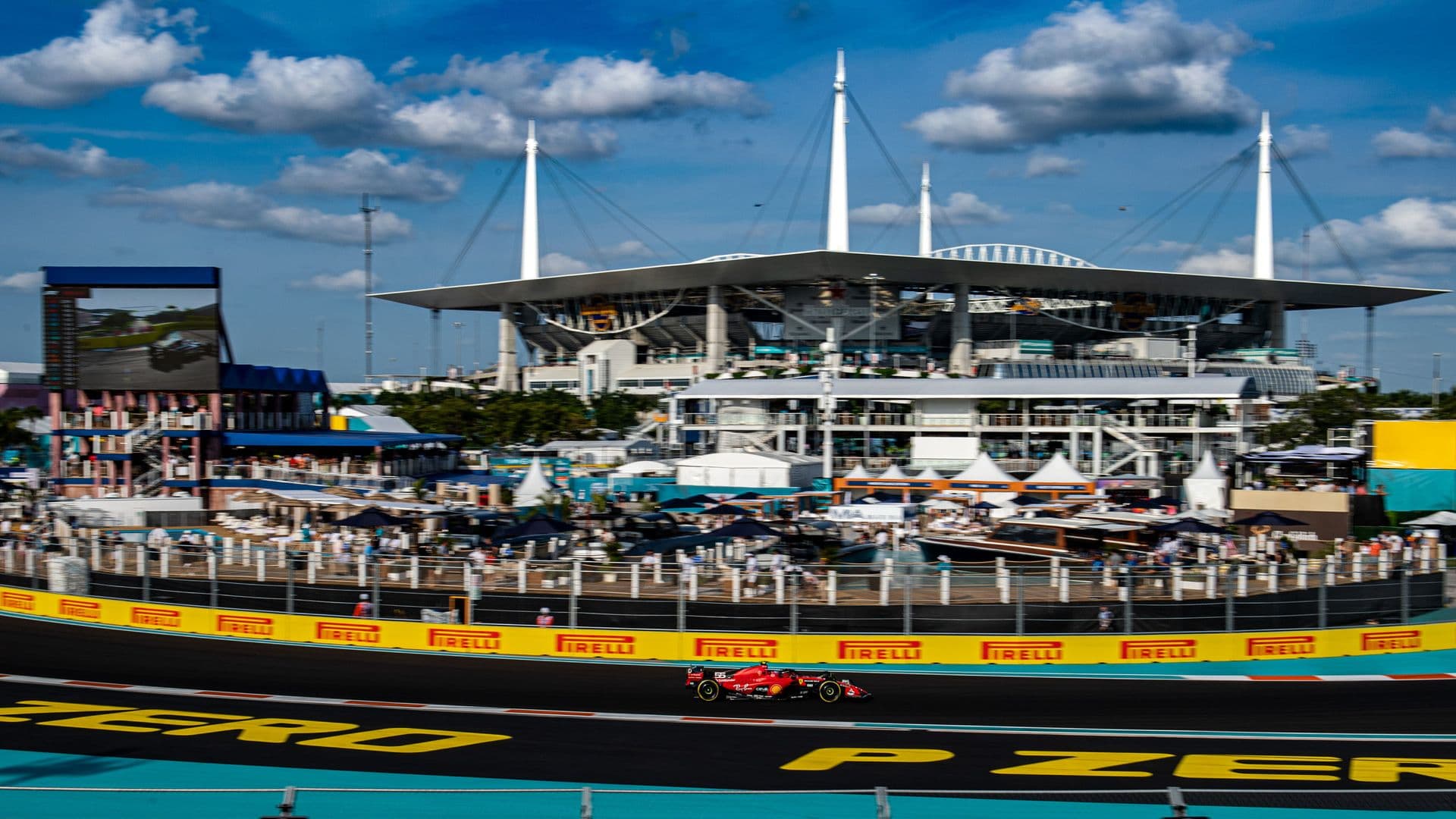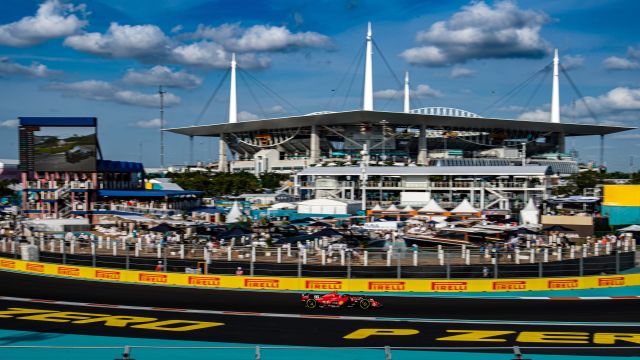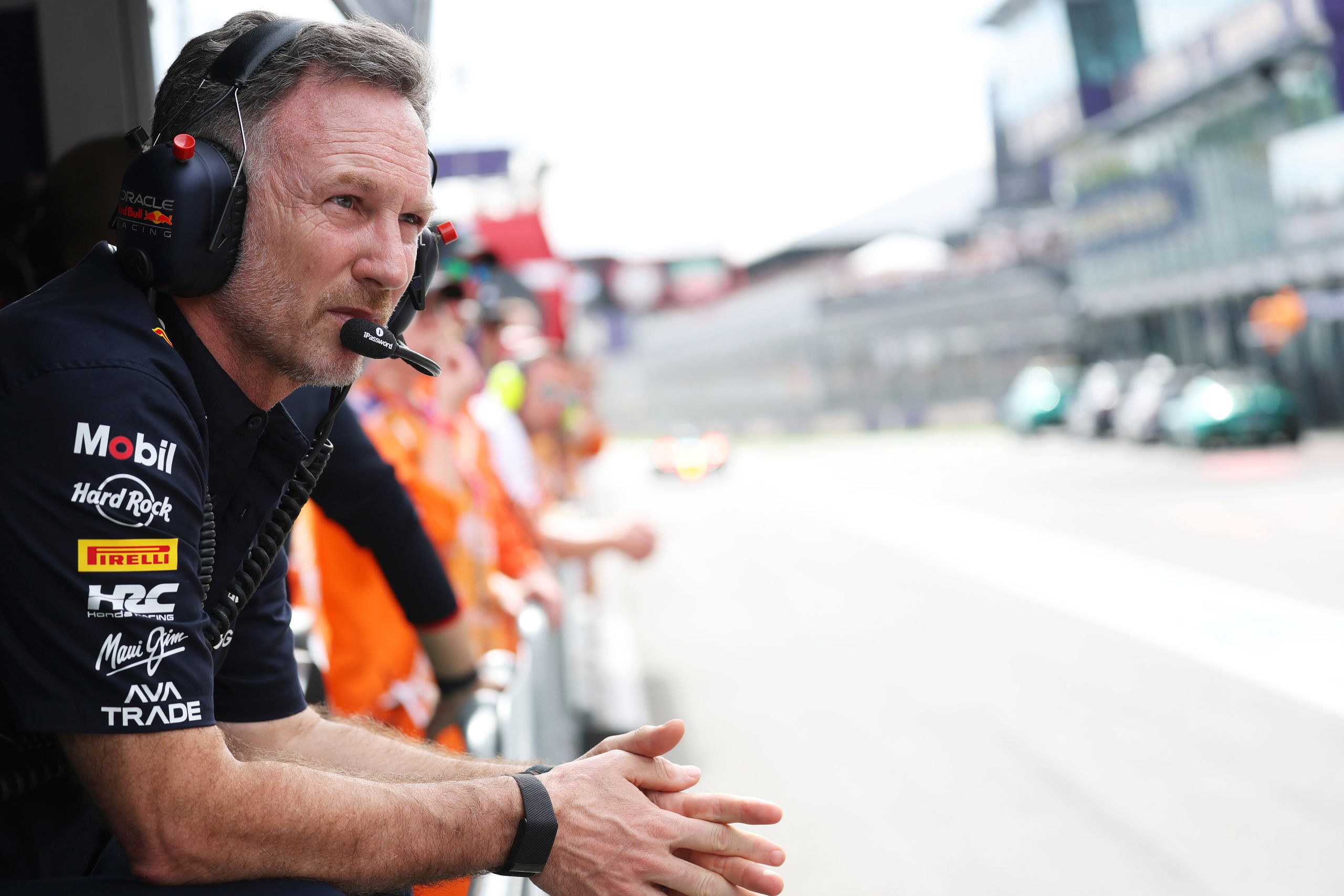The Process of Designing a Formula 1 Track: Behind-the-Scenes and Engineering Insights


Buckle up, motorsport enthusiasts – we’re about to take a high-speed journey into the world of racetrack design! Have you ever wondered about what goes into constructing a Formula 1 track which ensures unimaginable speed, nerve-wracking turns and remarkable safety? The intricacies that facilitate thrilling overtakes, yet maintain the absolute safety of these daredevil drivers? This blog will shift gears and propel you straight into the behind-the-scenes drafting rooms and engineering labs where speed meets science. From mapping out snaking chicanes to the super-elevated cambers, delve deep into the nuts and bolts of creating the world’s fastest, safest and most sophisticated racing arenas.
Designing a Formula 1 track involves various key factors such as safety, challenging layouts, iconic corners, and potential for overtaking. Safety is of utmost importance, requiring calculations for appropriate run-off areas and effective barriers. Additionally, the track layout should present exciting challenges to drivers while providing opportunities for thrilling race moments. Our article dives into the behind-the-scenes of designing a Formula 1 track, discussing these crucial aspects and more.
Behind the Scenes of Track Design
Designing a Formula 1 track is a complex and intricate process that combines artistry, engineering, and innovation. It entails creating an experience that challenges the drivers while prioritizing safety and exciting racing for spectators. To give you a glimpse behind the scenes of this fascinating endeavor, we’ll explore the various aspects involved in track design.
Formula 1 tracks are meticulously crafted to provide a unique experience at every circuit around the world. Each track offers its own distinct challenges and characteristics, making it essential for designers to consider multiple factors during the planning phase. These factors include high-speed corners, hairpins, straights, chicanes, elevation changes, and more. The goal is to create a beautiful symphony of turns that tests the skill and precision of the drivers.
Let’s take the iconic Circuit de Monaco as an example. Nestled in the principality of Monaco, this challenging street circuit winds through narrow streets with tight corners, providing an exhilarating spectacle for both drivers and fans alike. The track’s design takes into account not only the physical constraints of the city but also the historical significance and glamour associated with Monte Carlo. This blend of technicality and prestige sets Monaco apart from other tracks on the F1 calendar.
Now that we have a general understanding of what goes into designing an F1 track let’s shift our focus to one crucial role in this process – The Role of the Architect.
- As of present, Hermann Tilke has designed or redesigned over 25 different Formula One circuits, leading to him having a significant impact on the modern face of Formula One racing.
- According to estimations, the cost of developing a modern F1 circuit can be upwards of $270 million, with annual maintenance costs approximating $18.5 million.
- Advanced simulation programs such as CSAS are used in designing today’s F1 tracks, calculating critical safety parameters including optimal runoff areas and effective crash barriers.
- Designing a Formula 1 track is a complex and intricate process that requires careful consideration of various factors such as high-speed corners, straights, elevation changes, and historical significance. Each track aims to provide a unique experience for both drivers and spectators while prioritizing safety. The architect plays a crucial role in creating a track that challenges the drivers’ skills and showcases the prestige of the location.
The Role of the Architect
The architect plays a pivotal role in translating the vision for a Formula 1 track into reality. They work closely with engineers, race organizers, and stakeholders to develop a layout that caters to both technical considerations and logistical requirements. The architect carefully considers factors such as safety regulations, feasibility of construction on different terrains, environmental impact, spectator views, accessibility, and more.
Think of the architect as the conductor of an orchestra. They have the responsibility to harmonize various elements, ensuring that every note – or in this case, every corner and straight – blends seamlessly together to create a symphony of racing.
Architects utilize computer-aided design (CAD) software and advanced simulation tools to model and visualize their designs in three dimensions. This allows them to evaluate different scenarios and iterate on the layout until they achieve the desired balance between technical challenges and entertainment value.
Consider the state-of-the-art Yas Marina Circuit in Abu Dhabi. The renowned architect Hermann Tilke combined his expertise with an ambitious vision to create a track that features a unique combination of sweeping curves, long straights, and challenging corners. Notably, the circuit’s iconic twilight race setting adds an extra layer of visual spectacle, captivating both drivers and fans alike.
Some critics argue that modern Formula 1 tracks designed by architects lack the character and excitement of older circuits. They claim that these newer tracks prioritize aesthetics over overtaking opportunities and close racing. However, architects counter this argument by explaining that designing tracks for modern F1 cars requires different considerations due to their increased speeds and complex aerodynamics.
Now that we have explored the crucial role played by architects in track design, we will delve deeper into location and terrain considerations which shape the very foundation of a Formula 1 circuit.
Location and Terrain Considerations
When it comes to designing a Formula 1 track, the location and terrain play a pivotal role in creating an exhilarating and challenging circuit. Track designers must carefully consider these factors to ensure a thrilling race experience for both drivers and spectators.
The first consideration is the geographical location of the track. Factors such as accessibility for teams, media, and fans, as well as available infrastructure and accommodations, need to be taken into account. The track should ideally be situated in an area with good transportation links, making it easy for participants and spectators to reach.
Terrain is another crucial aspect that influences the design of an F1 track. The topography of the land defines the layout and elevation changes of the circuit. Designers aim to create a mix of fast straights, challenging corners, and elevation variations that test the skills and capabilities of drivers.
A great example is the Circuit de Spa-Francorchamps in Belgium. Nestled within the picturesque Ardennes forest, this track features a combination of uphill climbs, downhill descents, and sweeping turns. The undulating terrain adds an extra element of challenge, making it a favorite among drivers.
Additionally, the natural landscape and features can be incorporated into the design for both aesthetic appeal and technical difficulty. For instance, lakes or rivers can be integrated into the layout or serve as natural barriers. This not only adds visual interest but also poses challenges for drivers as they navigate tight corners or maintain speed across uneven surfaces.
Ultimately, selecting an ideal location with diverse terrain sets the stage for an exciting F1 track design that showcases both driver skill and engineering prowess.
Now that we have explored how location and terrain impact Formula 1 track design let’s delve into key factors involved in planning and layout.
Key Factors in Planning and Layout
Designing a successful Formula 1 track involves careful planning and attention to detail. Numerous key factors must be considered to ensure a track that offers exciting racing while meeting safety standards and regulations.
One crucial factor is the length of the circuit. Formula 1 regulations specify a minimum length of 3.5 kilometers and a maximum length of 8 kilometers. This range allows for a variety of challenging sections and promotes overtaking opportunities, keeping the races competitive.
The layout and configuration of corners are also essential considerations. Different types of turns, such as hairpins, chicanes, and high-speed sweepers, enhance the overall experience for drivers and spectators alike. A well-designed sequence of corners can create exciting overtaking opportunities, test driver skills, and provide thrilling spectator views.
Think of it like composing a piece of music – a harmonious combination of different notes and rhythms creates an engaging composition. Similarly, a well-planned layout with various corner types establishes an enticing rhythm throughout the track.
Safety is paramount in Formula 1, and track design must adhere to rigorous safety standards. Run-off areas, barriers, fencing, and gravel traps are strategically placed to mitigate the risks associated with high speeds and potential accidents. Additionally, proper consideration should be given to the placement of pit lanes, garages, medical facilities, and spectator areas to ensure safe access and egress.
Another vital factor is the inclusion of viewing areas for fans. Elevated grandstands or natural vantage points allow spectators to witness the action from multiple angles around the circuit. The positioning of big screens around the track also enhances the spectator experience by providing live feeds and replays.
Having explored key factors in planning and layout let’s now delve into safety and regulation considerations in designing a Formula 1 track.
Safety and Regulation Considerations
When it comes to designing a Formula 1 track, safety is always the top priority. The FIA (Fédération Internationale de l’Automobile) sets specific regulations and guidelines that must be adhered to in order to ensure the safety of drivers, spectators, and track officials. These regulations cover various aspects such as circuit dimensions, run-off areas, barriers, pit lane design, and evacuation procedures.
One of the key considerations in track design is the placement of barriers. These act as a crucial line of defense in protecting drivers from potential accidents. They must be strategically positioned to absorb impact forces and minimize the risk of the car rebounding onto the track. Different types of barriers are used, including tire barriers, impact-absorbing barriers, and energy-absorbing barriers.
An interesting example is the use of Tecpro barriers, which are composed of plastic modules designed to progressively deform upon impact, dissipating energy over a larger area. This helps reduce the g-forces experienced by the driver upon impact.
Safety considerations also extend to ensuring proper visibility for drivers. Track designers must carefully plan elevation changes, corners, and straights to ensure good sight lines for drivers at all times. This includes minimizing blind spots and providing clear signage and flags to communicate important information during races.
Another important aspect is the design of run-off areas. These are designated spaces alongside the track where drivers can safely recover from a mistake or a collision without hitting any barriers. Run-offs need to be wide enough and made of materials that provide sufficient grip for deceleration while minimizing damage to the car.
Now that we have explored the safety and regulation considerations in designing a Formula 1 track, let’s delve into the engineering concerns and solutions involved in track design.
Engineering Concerns and Solutions
Engineering plays a critical role in designing a Formula 1 track that provides exciting racing while also meeting safety requirements. One of the primary concerns is ensuring a proper balance between high-speed sections and technically challenging corners to create overtaking opportunities and maintain driver engagement.
To achieve this, track designers use a mix of varying radii for corners, changes in camber, and track width adjustments. These design elements challenge drivers’ skills and provide strategic overtaking opportunities. Balancing these aspects requires careful consideration of the layout, topography, and climate of the site.
For example, the Circuit of the Americas in Austin, Texas incorporates a variety of corner types. It features tight hairpin turns, fast sweeping curves, and long straights that demand different driving techniques and enhance the spectacle for both drivers and fans.
In addition to creating an optimal racing experience, engineers must also focus on facilitating efficient drainage systems to prevent standing water on the track in case of rain. Proper drainage design ensures that water does not accumulate and compromise driver safety or disrupt races.
While some argue that Formula 1 track designs have become too standardized over the years, with similar characteristics repeated in many circuits, it is important to acknowledge that each track presents its own unique challenges based on factors such as climate, topography, and local regulations. Track designers constantly strive to strike a balance between innovation and adherence to safety standards.
Having explored the engineering concerns and solutions involved in track design, let’s now move on to discussing the financial aspects associated with creating a Formula 1 circuit.
Financial Aspects of Track Design
Designing a Formula 1 track is not only a technical and engineering feat but also a significant financial investment. The process involves careful consideration of various financial aspects to ensure the track meets both safety regulations and spectator demands while remaining financially viable.
One of the primary financial considerations in track design is the initial construction cost. Building a top-tier Formula 1 circuit requires substantial resources, including land acquisition, infrastructure development, safety measures, and high-quality materials for construction. These costs can run into the hundreds of millions of dollars, making it crucial for organizers to secure adequate funding before embarking on such a project.
Take, for instance, the Circuit of The Americas in Austin, Texas, which was constructed specifically for Formula 1 races. The construction cost of this state-of-the-art facility was estimated at around $400 million, with private investments and government support playing significant roles in funding the project.
Furthermore, tracks must allocate sufficient budget for ongoing maintenance and operational expenses. Maintaining a Formula 1 track involves regular inspections, repair work, resurfacing, safety upgrades, landscaping, and staffing. These ongoing expenses are essential to ensure the track remains safe, visually appealing, and conducive to hosting world-class races.
A breakdown of common financial aspects in Formula 1 track design:
| Financial Aspect | Explanation |
|---|---|
| Initial Construction | Includes land acquisition, infrastructure development, etc. |
| Maintenance Expenses | Ongoing costs for inspections, repairs, maintenance. |
| Operational Expenses | Staffing, utilities, technology infrastructure. |
| Marketing and Promotion | Attracting sponsors, managing advertising campaigns. |
To better understand the intricate financial aspects involved in track design, let’s draw a parallel with building a luxury hotel. Just as constructing an opulent hotel requires a substantial investment in acquiring prime land, constructing state-of-the-art facilities, and hiring skilled staff, designing a Formula 1 track demands careful financial planning and management.
Additionally, marketing and promotion play essential roles in the financial success of a Formula 1 circuit. Tracks need to attract sponsors and secure lucrative advertising partnerships to generate revenue. This includes engaging in robust promotional strategies, hosting events, developing digital marketing campaigns, and building strong relationships with corporate entities interested in associating their brand with the thrilling world of Formula 1 racing.
For instance, the iconic Circuit de Monaco, renowned for its glamorous backdrop and historical significance, attracts a myriad of prestigious sponsors such as luxury brands, automobile companies, and financial institutions. These partnerships not only contribute to the circuit’s finances but also enhance its prestige and allure within the motorsport industry.
In summary, the financial aspects of track design are multifaceted and require careful consideration throughout the process. From initial construction costs to ongoing maintenance expenses and generating revenue through marketing efforts, it is crucial for track organizers to balance safety requirements while ensuring the financial viability of these ambitious projects.





